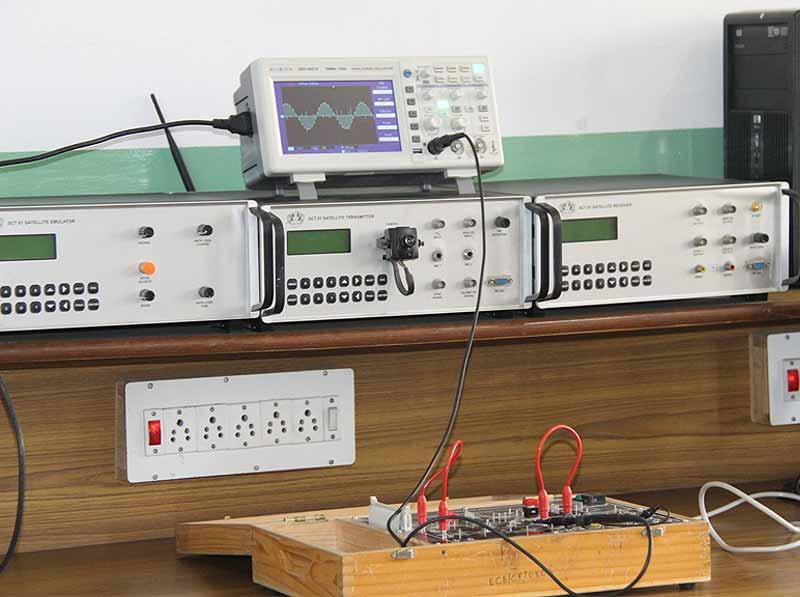Discuss the operating principle of Faraday’s rotation isolator.
Operating principle of Faraday’s rotation isolator:
In 1845 Michael Faraday demonstrated that the plane of polarization of a linearly polarized light is rotated when it passes through ferrite materials along the direction of applied magnetic field. This is true for microwave also. The reason is as a linearly polarized E.M wave decomposed into two circularly polarized E.M waves and these two polarized E.M waves travel with different speeds and as a result one leads to the other in phase. When these two circularly polarized lights are reinforced, then the resultant plane polarized wave suffers a phase rotation. So, the combination of these two will give the resultant E – vector pointing in a direction other than the initial direction. Thus the linearly polarized wave gets rotated as the wave travels in the ferrite media. This is known as Faraday rotation. Property of Faraday rotation in ferrite is used in designing non – reciprocal device like isolator, circulator etc.
The Faraday rotation isolator is shown in Fig. 28. Construction wise, a faraday rotation Isolator is very much similar to that a gyrator except that it employs a 45° twist section and 45° Faraday rotation. Also thin resistive cards are placed in the input and output guides to absorb the polarized field with the electric vector parallel to the wide side of the guide as shown in Fig.4. The magnetic field is applied along the wave guide axis and the ferrite rod. A TE10 mode when incident at port 1 passes through the first resistive card unaffected. Its E – field undergoes a 45° counterclockwise rotation because of the waveguide twist and then a clockwise rotation of 45° takes place due to Faraday rotation by the ferrite and hence these two rotations cancel each other. Finally the wave passes through the second resistive card unaffected and emerges at port 2. On the other hand a TE10 mode entering port 2 passes through the second resistive card unaffected its E – field undergoes a 45° clockwise rotation by the ferrite and then another 45° by the twist. Thus an overall rotation of 90° is produced. So the plane of polarization of E - field became parallel to the resistive card and thus it will be absorbed. In absence of resistive card the wave will be reflected for port 1. This leads to multiple reflections from both ports and transmission takes place in both the direction. For an isolator typical forward transmission loss of less than 1 dB, reverse attenuation lies between 20 and 30 dB, and bandwidth of operation is approximately10 %

Fig. 28 Faraday rotation isolator
What is IMPATT diode? How does the negative resistance arise in this diode?
What are cross field device? What role does the dc magnetic field play in their normal operation?

Describe why modulation is necessary for communication.

Write short notes on

What are the difference between TED’s and junction device?